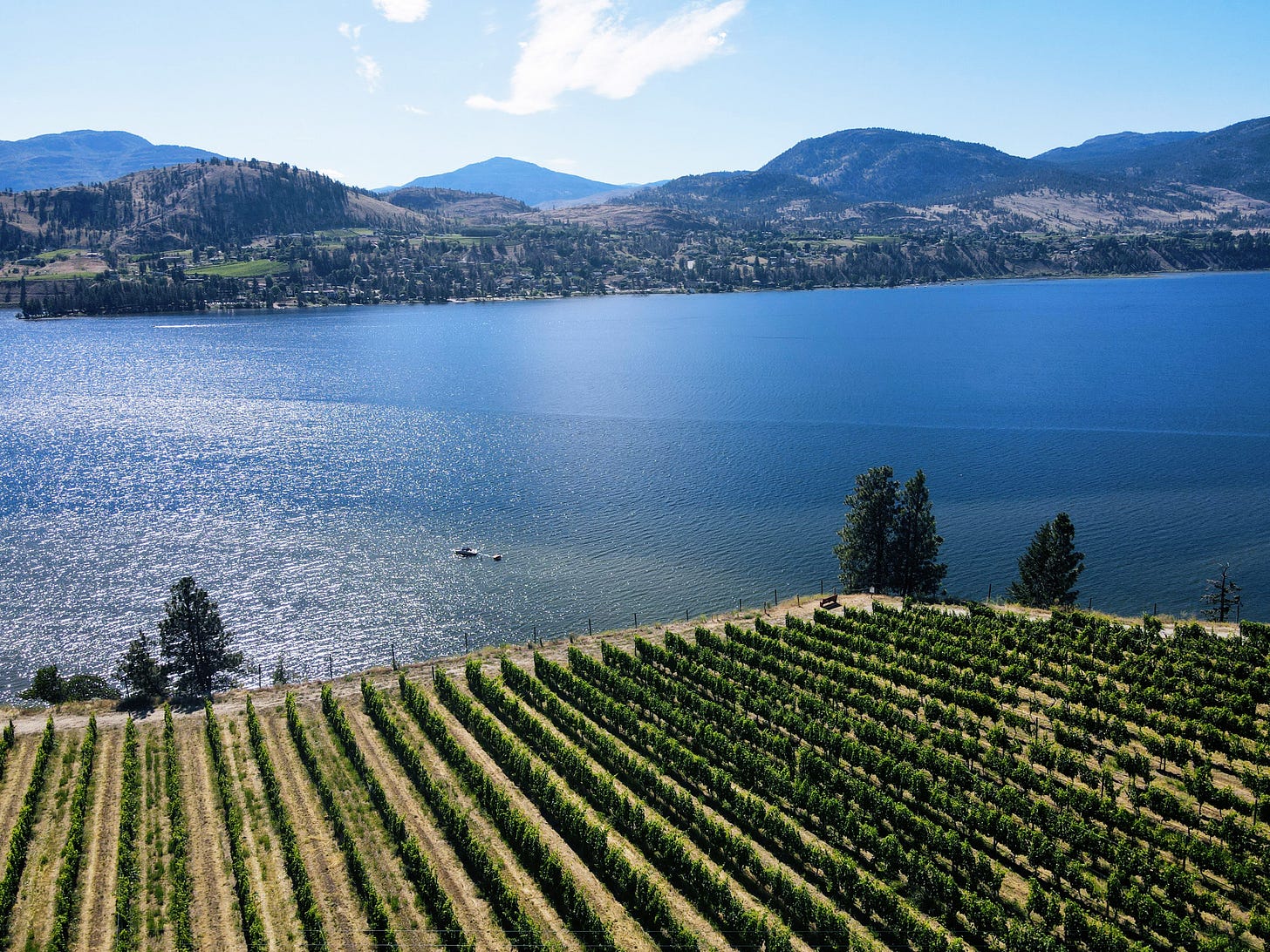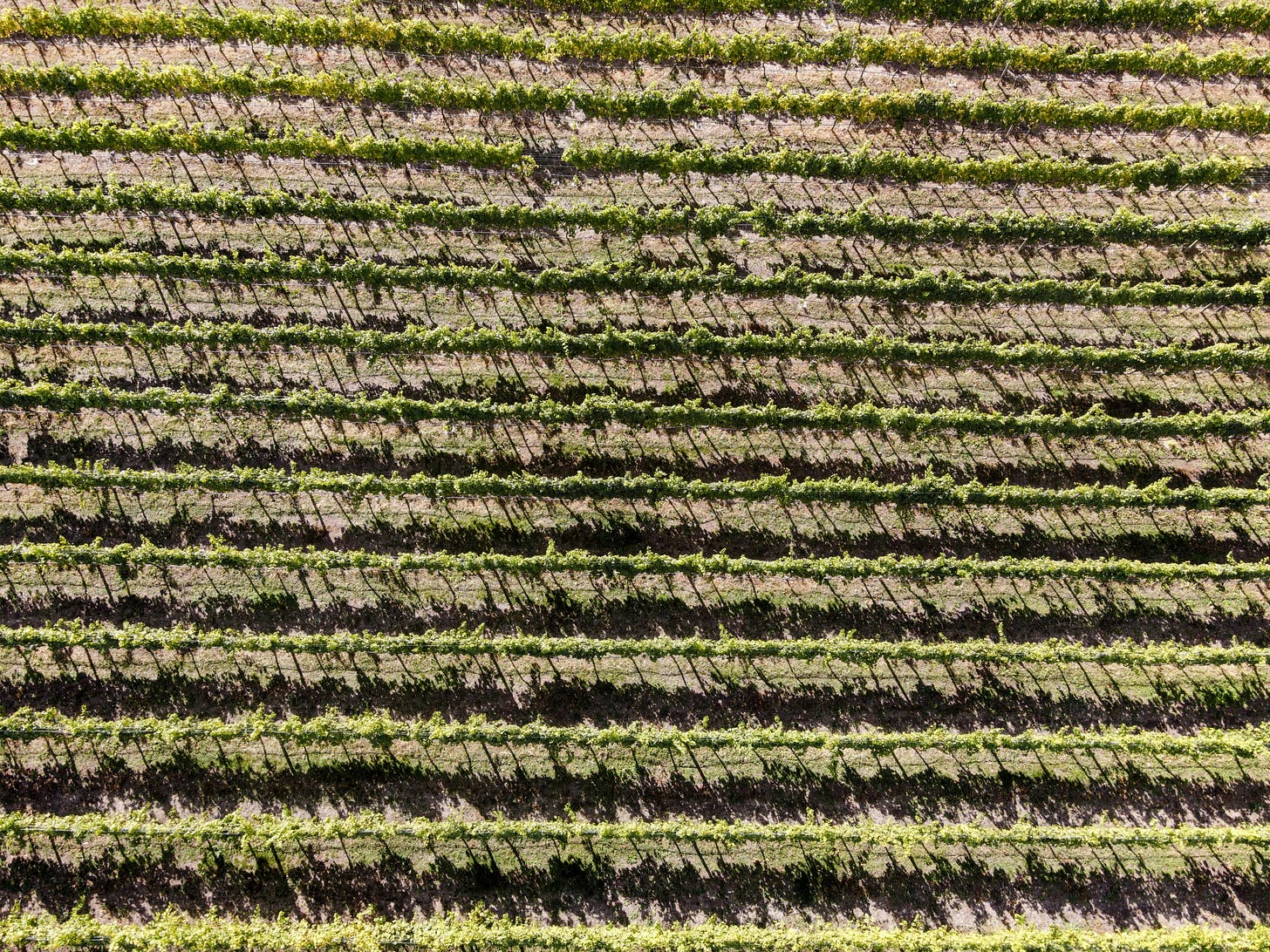A Wolf At The Door - BC Wine Regulatory Changes, by Anonymous
What short and long term risks are we taking by pushing - and publicizing - regulatory on wine-related import changes?
[Editor’s Note: We were approached about publishing this piece, and given the author’s employer and position felt it best to leave a name off of this piece.
Our goal in sharing this piece, and others to come, is to ensure all committed players in our industry, big and small, have as much information as possible. Our situation, with all the various high level players and factions, is a complicated and difficult one. If we are going to push through this crisis and emerge with a stronger industry, the decisions will not easy or obvious.]
by Anonymous
We are in a moment of crisis in the BC wine industry.
The extreme cold of December 2022 and January 2024 have created the potential for substantial change in the structure of the BC wine industry.
The current structure of our industry is one with a handful of large corporates (operating under commercial licenses), a large number of medium and small wineries (most who operate under land-based licenses), and independent growers (who sell their grapes to the wineries). It is a varied and colorful make-up of players with unique charms and allows for a diversity in wine production styles and quality. This allows our industry to cater to a wide audience of palates and preferences.
But are we at risk of a corporate takeover of the industry?
A little bit of regulatory background is needed. Currently, as referred to above, there are two types of regulatory regimes for wineries. First, there are commercial wineries that can, and often do, import wine and grapes from outside of the region. These wines are labelled “Cellared in Canada”. The second license is for land-based wineries (“LBWs”) that can only produce wine from grapes grown in BC and operate under advantageous regulations, relative to commercial wineries.
Due to the significant crop loss in 2023 and likely even more significant loss in 2024, many wineries and growers will have to change operations in 2024. Some will unfortunately have to sell, or face bankruptcy. Based on this fact there is currently a push to change the regulations allowing LBWs to import grapes so that there is wine to be produced in 2024, keeping people employed and bringing in revenue. And there is an easy route for LBWs to import grapes: simply convert to commercial winery licenses. So why don’t they?
The main impediments we see cited are that LBWs, due to their smaller size, are not able to be profitable without the advantageous regulations and rebates provided to LBWs. Further, LBWs do not have the capacity to handle the more onerous commercial license administration requirements, as these can be significant. The other major impediment is the requirement that to convert back from a commercial license to operating under an LBW license, they would be required to have zero inventory. Given the multi-year rolling stock of wine production, this makes switching back to an LBW license from a commercial license impossible. This is why the LBWs are requesting they be allowed to import wine or grapes while remaining on the LBW license - with all its advantages -or be permitted to easily switch back in a year or two.
This proposed regulatory change presents several hurdles. The BC taxpayer and public would be providing these advantages to benefit other grape growing regions - which might not even be Canadian. As well, the current call is for the relaxation in regulations for a limited period, perhaps two years. However, regulations which were relaxed during COVID are still being rolled over. We have a multitude of examples of temporary regulations becoming permanent and it would be naïve to assume that any temporary regulations do not become permanent. We can look to our neighbours in Ontario for a prime example of just how this happens (and has harmed their wine industry two decades later).
If the regulations are extended, it would be increasingly difficult to distinguish 100% BC wine from wine made by the LBWs with imported fruit. Again, this is a confusion our VQA neighbours in Ontario are still having with their consumers. Furthermore, if BC allows the import of grapes to LBWs and then stops it, what is to stop the trading partner from launching a trade suit? Our measures being “temporary” will not staunch this. What guarantees are there that the imported fruit, mostly grown at a costs BC grape growers cannot compete with, stops coming in?
It is imperative for us to remember that our markups and exemptions are likely not trade compliant. NAFTA and other trade agreements have been squeezing and reducing government support to wine and agriculture. Nova Scotia is experiencing this very challenge right now1. By changing our regulations and granting temporary beneficial market access to regions like Ontario and Washington, we are begging for trade challenges. Even if these changes are (supposedly) temporary, it will both draw attention and create economic incentives to reduce any rebates and regulatory advantages.
Now, some may say we should be a truly free market, and we would remind you of two things:
both agriculture and alcohol are not a free market around the world, and are
among the most subsidized and regulated industries internationally. Nearly all our wine producing competitors receive various levels of subsidies, and often lower regulatory hurdles to market than in BC; and
as a very small wine region with limited potential acreage, all in difficult farming areas, we would easily be swallowed up by Washington state. Our entire wine region is smaller than their largest winery operation. The massive challenges of tree fruits and the devastation wrought there are illustrative of this.
Even aside from these above issues, the possible long-term consequences to the present structure of the BC wine industry needs to be carefully considered. Talk in the Okanagan Valley and at the recent Town Halls seems to indicate that there is a rush to push through regulatory amendments without, it appears, a great deal of consideration to the potential long-term outcomes. There is a risk of significant structural change, and this is that these temporary amendments in regulations will result in the possibility of leveling the playing field in the BC wine industry long term, namely that LBWs no longer have advantageous regulations compared to commercial wineries.
Let us be clear - the regulatory amendments might result in opening the door for unexpected corporate behavior. The story could go like this: after a few years some of the commercial wineries might, following sound business planning and to gain market share, argue that the temporary changes in LBW regulation is an unfair practice and appeal for all commercial wineries to be allowed the same tax breaks. Or they may insist that all wineries in BC follow the current program of commercial winery licenses. The protesting commercial wineries could argue that the LBWs still have non-BC wine inventory and thus must convert or dump the inventory. This will serve to reduce the value of medium and small wineries, and will certainly force some to go out of business. How economically viable will many operations be without the financial and regulatory support of current LBW licenses? These will become easy acquisitions for the large corporates and they will end up owning most of the vineyard land in the Okanagan Valley. The previous small and medium wineries will likely be turned into a more generic brand with a few premium wineries - but not under individual ownership.
The varied and diversified landscape of the BC wine industry with small, medium and large wineries will be lost forever and the BC winery landscape will become a large corporate venture. The decisions will be made in corporate boardrooms and smaller players will be out-competed and out-purchased. The value and clear identity that consumers see in BC wine will no longer exist. This seems to be the path most of world is following across many industries. It is up to us in this industry to decide if we are willing to walk down this path and take this risk.
Of course, there is always another side to the story. What is the risk to the BC wine industry if these regulatory changes are not sought and there is not sufficient fruit for a sustainable wine industry? Will the outcome perhaps not be the same as the above? What are the alternatives to regulatory changes and their possible unforeseen risks?
A wine region depends on the terroir to give it an identity. Instead of seeking to support foreign growers, perhaps we should be focusing our attention on our terroir and how to support the farmer as well as small, medium and large sized wineries in remaining financially sustainable in these trying times? The vineyard acreage of the Southern Interior is 70% winery operated and 30% independent grower operated. Perhaps we should be focusing our attention on providing access to financial support, possibly in the form of cost sharing agreements or preferential loans, to cover the running costs of the farms and wineries and keep the workers employed over what is a temporary emergency period until crop returns?
If it is necessary to bring in non-BC fruit, it seems unwise to grant financial and regulatory incentives to do so. This will create very significant risk to industry structure and in our trade agreements with other nations and even within Canada. There are already rumblings that Ontario is prepared to challenge some of the proposed changes in our industry. Further, consumer trust takes years to build but we can destroy it in an instant through confusing and self-destructive changes. If Washington wine is truly no different – and is worth spending $30 a bottle on – what does this say about BC wine?
Most importantly – we risk destroying an industry it has taken decades to build. Small and medium sized wineries, understandably seeking to survive, may simply make themselves easy targets for larger corporate interests. We risk permanent changes – there will be no temporary ones – that reduce the quality, perception, and long-term economic viability of non-corporate wineries.
One thing is certain, change is on the way whether we want it or not. As an industry it is imperative to consider the potential changes and their long-term outcomes before rushing headlong into something that has unforeseen consequences in the future. Times of change can also bring significant opportunity for improvement, and can be stepping stones to something better, if we can just see the way and persevere. Will fortune favor the brave who refuse to dilute their 100% BC brand or will they be swept away by the tide of corporatization that is approaching? Will the government and the public support the BC wine industry to remain strong against the rising tide of corporatization? And will we expose ourselves to further trade challenges from within Canada or internationally? We must plan not only for 2025, but 2030 and 2040 and ensure our industry thrives not only for ourselves but future generations.
https://www.cbc.ca/news/canada/nova-scotia/nova-scotia-wineries-concerned-new-commercial-program-1.7133558







A well written and thoughtful piece that outlines the conundrum we are facing.